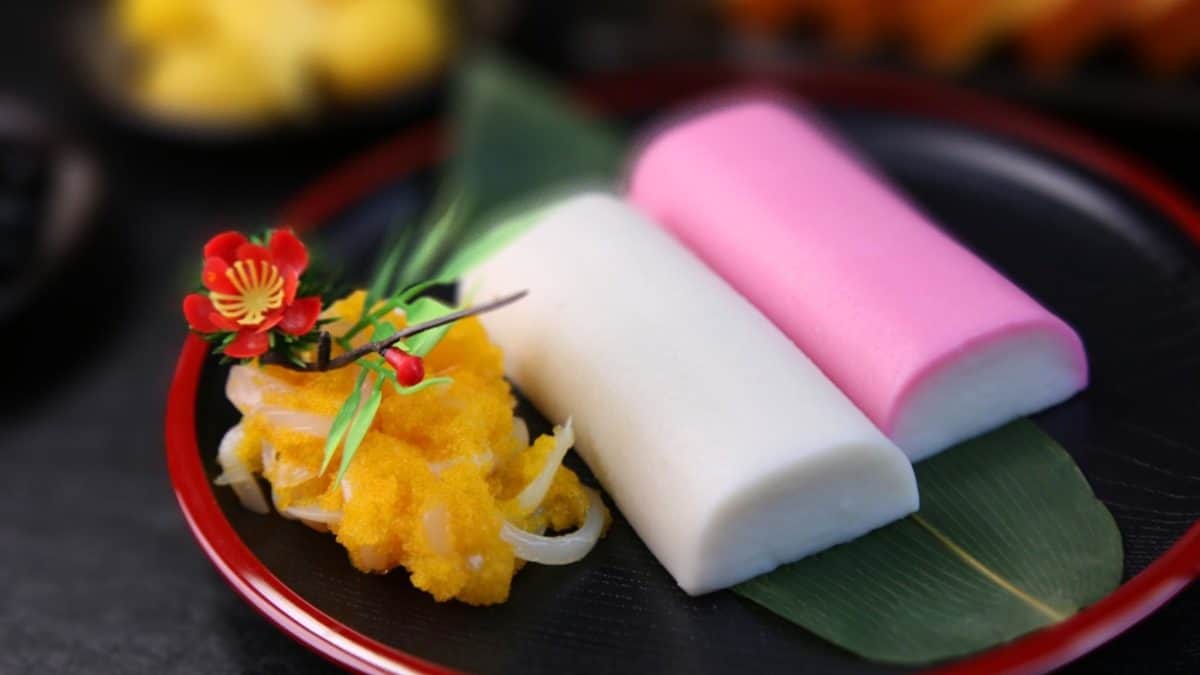Are Kamaboko And Narutomaki Gluten-Free, Keto Or Vegan?
It can be hard to know if something is gluten-free or not, especially when you’re at a party or eating out. There are so many hidden sources of gluten in Asian food, from soy sauce to wheat fermented foods.
But, kamaboko and its swirly cousin narutomaki are Japanese fish cakes that may be the gluten-free answer!
Spoiler alert: it isn’t the vegan answer (but I have some options and a recipe for you).


Check out our new cookbook
Bitemybun's family recipes with complete meal planner and recipe guide.
Try it out for free with Kindle Unlimited:
Read for freeIn this post we'll cover:
What is in kamaboko?
Gluten is the protein that’s naturally found in grains like wheat, barley, and rye so we have to make sure our kamaboko doesn’t contain any of those.
Kamaboko are fish cakes that can have different shapes and colors, a smooth soft texture and are rather chewy and not that fishy at all.
They are made from ground white fish (surimi), mirin, fish sauce, sake, salt, and sugar. They are used in different proportions in different types of kamaboko, but those are generally the ingredients.
Is kamaboko gluten-free?
Authentic kamaboko is gluten-free because it uses original ways of making its ingredients like mirin, sake, and fish sauce. Store-bought kamaboko may contain gluten as a result of cutting corners and using cheaper alternatives that may contain wheat.
Whitefish is gluten-free and it makes up the largest portion of kamaboko, so that’s a good thing. Completely fine to be consumed by people with celiac disorders.
Authentic mirin is gluten-free as well because it’s made from rice alone. There are however cheaper versions available on the market called aji mirin hat sometimes use additives containing gluten.
If you buy kamaboko in a restaurant in Japan you’re probably safe, but store-bought might be made with aji mirin. Even then the chances of it containing gluten are very slim, but you can’t be 100% sure.
Sake is gluten-free as well so that’s safe and the pink food coloring is artificial and made of chemical compounds so the pink kamaboko is gluten-free as well.
That leaves fish sauce, which is made from krill or fish fermented with salt. This is typically gluten-free as well, but is sometimes produced in manufacturing plants that make products with guten as well, or cheaper brands may contain wheat for a cheaper fermentation process.
So you have to be careful with the type of kamaboko you are eating. When eating at a Japanese restaurant you should usually be safe but buying some at the store might leave you with a gluten-ridden fish cake.
No, there will only be trace amounts, but be careful nonetheless.
Also read: these are the 10 best fish cakes to use in your ramen
Are the sauces that pair with kamaboko gluten-free?
Kamaboko is usually paired with wasabi, which is horseradish and soy sauce. But you can eat it in soups or just as is without any sauce.
Authentic wasabi is gluten-free but some brands have started using wheat starch as additives as well, so you should always check the packaging.
Soy sauce is usually not gluten-free so you should skip it, unless it’s tamari sauce served in Japanese restaurants often, in which case it is gluten-free.
Is kamaboko vegan?
Kamaboko is a fish cake, so they are not vegan-friendly. They can be eaten on a pescatarian diet though because there are no other forms of animal products in them.
There are some brands that make vegan kamaboko, like Qun Li and Soyatex, but they aren’t readily available everywhere so you might have to scour the markets or the internet if you can get them shipped to your house.
I also found this vegan kamaboko recipe made with rice dough, or rather a reddit thread that has a lot of tips on making it vegan.
Is kamaboko keto friendly?
Kamaboko does have carbs from the added sugar and fish sauce, but it’s only 11% of the calories, which are 17 grams per serving. So you can eat a few slices of kamaboko to stay under your daily limit.
Sugar is a no go on the keto diet, but the amount in kamaboko is so little that you can still eat a few pieces. The same goes for fish sauce, which you can eat in moderation when on this diet.
Conclusion
Kamaboko is very delicious, and if made the right way, the traditional way, you can be sure you have a delicious gluten-free and pescatarian option to supplement your meals.
Also read: how to keep leftover kamaboko fish cakes in your fridge or freezer
Check out our new cookbook
Bitemybun's family recipes with complete meal planner and recipe guide.
Try it out for free with Kindle Unlimited:
Read for freeJoost Nusselder, the founder of Bite My Bun is a content marketer, dad and loves trying out new food with Japanese food at the heart of his passion, and together with his team he's been creating in-depth blog articles since 2016 to help loyal readers with recipes and cooking tips.
